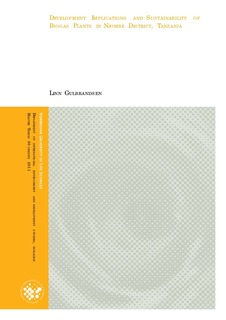| dc.description.abstract | This thesis focuses on biogas as a sustainable energy source compared to traditional fossil fuels commonly used in rural areas in Tanzania. It also examines the household’s usage and behaviour towards biogas, and if introduction to this technology can improve the development for the farmers in the area. Interviews with 11 farmers who had established biogas plants and 11 farmers without biogas were carried out. The methods used were both qualitative and quantitative in the form of in-depth and semi-structured interviews together with a survey. This study was conducted in Ibumila and Lunyanywi village within Njombe district in Tanzania. Biogas technology is highly relevant for the households keeping dairy cattle in Njombe with regards to cover the needs of cooking and lighting. The use of firewood, charcoal and kerosene has been significantly reduced after establishing biogas and women have more time to rest after the demand for firewood has been reduced, leading to improved health. From spending 2.5 hours collecting firewood, they are now using 20 minutes to perform the tasks for biogas production. This extra time is used for work on the farm and for other income generating activities, and the independence from traditional fossil fuels can save the households USD 375.65 annually. Biogas has led to a radical change in the division of labour. Gathering firewood was mainly the women´s responsibility, but after introduction of biogas the women only have the main responsibility in 4 of the 11 households, while in the remaining 7 households the fathers have got an increased responsibility of gathering the inputs for biogas production. This is also the case for cooking, where the lack of soot and smoke, together with the simplicity of cooking have resulted in 6 households were the father and mother have equal responsibility of cooking, and 5 where all the members share this responsibility, previously only performed by women. This shows that introduction to biogas have empowered women and differ highly from the households without biogas plants. Biogas technology is contributing in achieving 7 of the Millennium Development Goals, but there are also some limitations to biogas in the two villages. The total cost of establishing a biogas plant is USD 1,954, and even with a 50% subsidy covered by the farmer groups, the amount paid by the households is equivalent to double the annual income for the farmers without biogas plant, leading to a slow uptake of the technology and a trend where only the farmers who are more well off will be able to acquire it. The awareness regarding the technology is rather low, and there is also a limitation that the pipes are mainly leading into the kitchen, limiting the use of biogas for lighting other rooms and for heating, meaning that the households still have to use firewood, charcoal and kerosene to some extent. | en_US |
